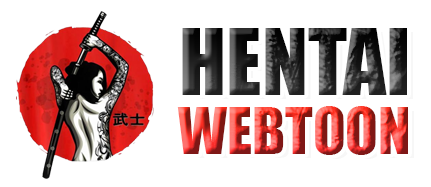Manga hentai vs. Manhwa hentai vs. Manhua hentai do you know the best Asian adult Comics
Manga hentai vs. Manhwa hentai vs. Manhua hentai do you know the best Asian adult Comics
While most of my articles here focus on anime reviews, weekly episode discussions, and “best of…” lists, today I’m stepping outside the realm of anime to explore something a little different: the differences between manga, manhwa, and manhua. Each of these comics has its own unique characteristics, making them enjoyable in their own way.
In this article, I’ll primarily explore their readability and highlight examples from action-based works. Please note that this is a general, non-expert overview that won’t cover every niche or detail within these categories.
Let’s dive in.
Manga hentai
Manga is arguably the most well-known of the three and doesn’t require much introduction. With the largest global fanbase, manga has a special place in the hearts of anime fans, as many anime series are adapted from manga, further fueling its popularity.
One of the major advantages of manga is the availability of translations. As manga has been around for longer, it’s much easier to find high-quality official English translations. Even when official translations are unavailable, numerous fan groups and unofficial translators keep up with the latest releases.
In terms of art style, most manga is traditionally black and white, with color used sparingly—usually for special editions or to emphasize specific scenes. But just because it’s black and white doesn’t mean it’s lacking in detail. Talented artists can create breathtakingly intricate artwork that rivals the beauty of colored panels. Consider works like Vagabond, One Punch Man, Kokou no Hito, and Berserk—these examples showcase the depth and artistry of manga.
What manga excels at is its sheer variety. Whether you’re into comedy, romance, action, adventure, fantasy, or even reincarnation stories, there’s a manga for you. The length can vary too, with some stories wrapping up in 100 chapters, while others—like One Piece—continue for over a thousand.
Manga is also traditionally read from right to left, unlike Western comics or manhwa, which are read from left to right. While digital versions are available, reading manga on your phone can sometimes feel cramped due to the layout.
Manhwa hentai
While manhwa might not be as globally popular as manga, its popularity has been steadily growing, especially with the rise of webtoons and more manhwa-based adaptations into anime. This increase in recognition has helped manhwa gain a larger following.
Manhwa translations are generally reliable, especially since the language tends to be simpler compared to the more nuanced Japanese in manga. While there aren’t as many translators as there are for manga, the number of official and unofficial translations is steadily rising.
What sets manhwa apart is its art style—manhwa is typically fully colored, unlike the black-and-white manga. Modern manhwa emphasizes fluidity in its action scenes, often placing more focus on how characters move and interact during combat. This can sometimes make action sequences harder to follow, but it also contributes to a dynamic, visually immersive experience.
Some examples include Solo Leveling, The God of High School, and Gosu (The Master), where the emphasis is on vivid, high-energy action.
Another advantage of manhwa is its format, which is optimized for digital reading. Most manhwa is designed to be read vertically, scrolling from top to bottom, which works perfectly on mobile devices. With minimal text in each panel, you don’t need to zoom in as often, making it ideal for reading on the go.
Manhua hentai
Manhua, while perhaps the least known in Western markets, is incredibly popular in China and other Chinese-speaking communities. Unfortunately, its appeal is somewhat limited elsewhere, especially in comparison to manga and manhwa.
Translation for manhua can be hit or miss. Many manhua are based on Chinese web novels, and due to cultural differences, the translated text can often be more wordy than the original. Manhua also features a lot of Chinese slang, proverbs, and terminology, which can be challenging for readers unfamiliar with the language.
In terms of art, manhua occupies a middle ground between manga and manhwa. It retains the panel structure of manga but is typically fully colored, much like manhwa. However, the coloring in manhua tends to have a more watercolor-like quality, and the lines feel more realistic. While manhwa emphasizes movement and action, manhua focuses more on visual aesthetics and mood.
Notable examples of manhua include Song of the Long March, Yuan Zun, and Azure Legacy, which show off the rich, often ornate style unique to this medium.
One downside of manhua is that many stories (especially those in the martial arts or cultivation genres) can feel repetitive. Side characters often seem underdeveloped, and minor conflicts can become irritating. That said, there are some excellent gems to be found if you’re willing to dig a little deeper.
Regarding reading format, it’s a bit of a toss-up. While some manhua follows the same vertical scrolling format as manhwa, others can have large blocks of text that require more zooming in, making it a mixed experience on mobile devices.
TL;DR:
- Manga hentai : Best for those who enjoy a wide variety of themes and genres. Classic and versatile, it’s perfect for anyone who loves action, drama, romance, and more.
- Manhwa hentai : Ideal for readers who love action scenes and want something with more fluidity. Perfect for mobile reading with its vertical scrolling format.
- Manhua hentai : Perfect for those who appreciate rich, colorful art and visual aesthetics. Manhua may also appeal to readers who enjoy Chinese mythology and culture.
I hope this breakdown helps you understand the unique characteristics of manga, manhwa, and manhua. Happy reading!
This version maintains the original points while improving readability and clarity, making it more engaging for readers. Let me know if you’d like any other adjustments!
